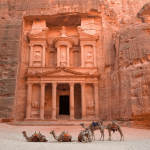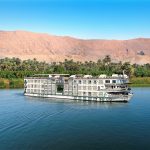Best Time to Visit Egypt: A Guide for Your Perfect Trip
Egypt, the land of pharaohs, pyramids, and the majestic Nile River, offers a wealth of experiences. From cruising along the Nile to exploring vast deserts and ancient temples, this country has something for everyone. Whether you’re climbing the Great Pyramid, wandering through bustling markets, or enjoying local cuisine, Egypt captures the heart and ignites the imagination.
To make the most out of your visit, timing is crucial. Weather conditions, local events, and tourist crowds can greatly affect your experience. Egypt’s year can be broken down into distinct seasons, each bringing different weather patterns and tourist volumes. Understanding the best time to visit based on these factors is key to planning an unforgettable adventure.
This article will explore the ideal seasons to visit Egypt, taking into account weather conditions, crowd levels, and your travel interests.
Egypt’s Weather: A Seasonal Breakdown
Summer (June-August): Extreme Heat and Crowds
During summer, Egypt faces sweltering heat, with temperatures often exceeding 100°F (38°C). This intense heat can lead to health risks like heat exhaustion. It’s important to stay hydrated and take necessary precautions if visiting during these months.
Sightseeing and outdoor activities can be challenging. Many tourists limit their excursions, opting for early morning or late afternoon visits. This means popular sites may become crowded as everyone tries to avoid the midday sun.
Winter (November-February): Pleasant Temperatures and Fewer Crowds
In winter, temperatures range from 50°F (10°C) to 75°F (24°C), making it a comfortable time for exploration. This mild weather is ideal for sightseeing without the heat wearing you down.
However, it’s worth noting that some regions may experience occasional rain. Certain historical sites might limit accessibility during these cooler months, so planning is necessary.
Spring (March-May) and Autumn (September-October): Shoulder Seasons
Spring and autumn offer moderate temperatures, ranging from 70°F (21°C) to 85°F (29°C). These shoulder seasons balance pleasant weather with manageable crowds, making them prime times for travel.
Friendly prices and availability make these months attractive for visitors. You can enjoy a more relaxed experience at famous sites without feeling rushed.
Crowds and Tourism: Peak vs. Off-Season
Peak Season: December-February and July-August
The peak season for tourism in Egypt mostly falls in December-February and mid-summer in July-August. Many factors contribute to this surge, including winter holidays, Christmas breaks, and school vacations. During this time, the number of visitors can double.
To navigate crowds, book tours and accommodations early. Popular attractions may have long lines, so planning ahead is crucial.
Off-Season: June, September-October, and March-May
Traveling during the off-season can yield benefits like lower prices and fewer crowds. For instance, visiting the Pyramids of Giza or Luxor Temple in spring can provide a quieter experience.
However, be aware that some services may be limited during the off-season. Certain tours or sites may have restricted hours or availability.
Best Time for Specific Activities
Nile Cruises: October-April
For Nile cruises, October to April is the best choice. The weather during these months is usually comfortable, creating an enjoyable cruising experience.
Summer heat makes it less pleasant for long boat rides, as temperatures can rise dramatically.
Desert Adventures: October-April
October to April is also ideal for desert adventures. Cooler temperatures allow for daytime activities, like camel trekking or stargazing.
In summer, extreme heat poses risks for desert exploration, making it less enjoyable and potentially dangerous.
Historical Site Exploration: Year-Round (with Caveats)
Historical sites can be visited year-round, but weather comfort varies. Opt for cooler months for a more pleasant experience. Always check local weather conditions before planning your itinerary.
Budget Considerations: High vs. Low Season
High Season Pricing: December-February, July-August
Peak seasons often bring high prices for accommodations and tours. Popular hotels may increase rates during these times. For example, you might find a 30% hike in hotel prices during peak travel.
To find better deals during high season, consider booking well in advance or looking for package deals that include multiple activities.
Low Season Deals: June, September-October, and March-May
The off-season offers opportunities for significant savings. Accommodations and tours can be priced up to 50% lower during these months.
Look for budget-friendly options like guesthouses or local eateries, which can enrich your travel experience while saving you money.
Things to Consider When Choosing Your Trip
Religious Holidays: Ramadan and Other Significant Events
Traveling during Ramadan or other religious events can impact your experience. For instance, many restaurants and attractions may have altered hours, and some may even close. Increased crowds can happen during Eid celebrations.
Plan accordingly by checking local calendars to enjoy the full Egyptian experience while respecting these cultural practices.
Local Events and Festivals
Local festivals can enhance your visit, offering a chance to experience Egyptian culture. Research events that may coincide with your travel dates.
Whether it’s a cultural festival or local market, participating can provide unique memories.
Conclusion
In summary, the best time to visit Egypt varies based on your interests and budget. Winter and shoulder seasons generally provide comfortable weather, fewer crowds, and appealing prices.
Plan ahead, especially around religious holidays or major events, to maximize your experience. The wonders of Egypt await, so get ready to experience its rich history and vibrant culture.






